
Heron, Grouse, and Loon Rocks!

While you may know Heron, Grouse, and Loon by Elliot Offner (1931-2010) as the sculptural trio of larger-than-life waterfowl in a garden chock-full of gorgeous native plants, it is also home to the new South Carolina Geologic Garden. I am a horticulturist here at Brookgreen Gardens, and I also have a passion for geology.
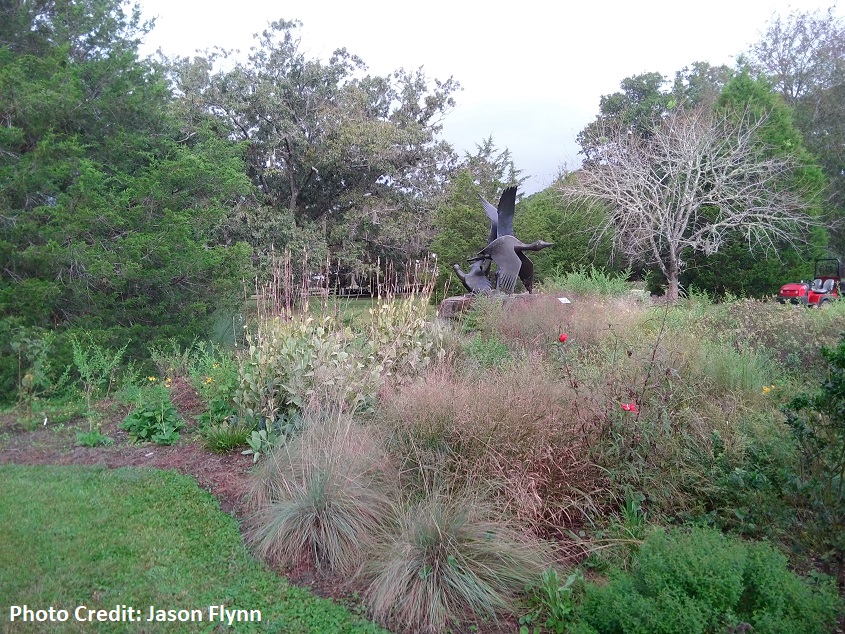
Geology and the resulting interconnections in the collective natural world are ubiquitous in our everyday lives. Natural processes continually mold and shape geology, horticulture, all living things, and the entire Earth's geosphere. While it may be hard to wrap our heads around, time, gravity, and natural processes such as these are everywhere. We don't always think about geology and the impacts of these processes, but they have a lot to teach us, as we will soon see.
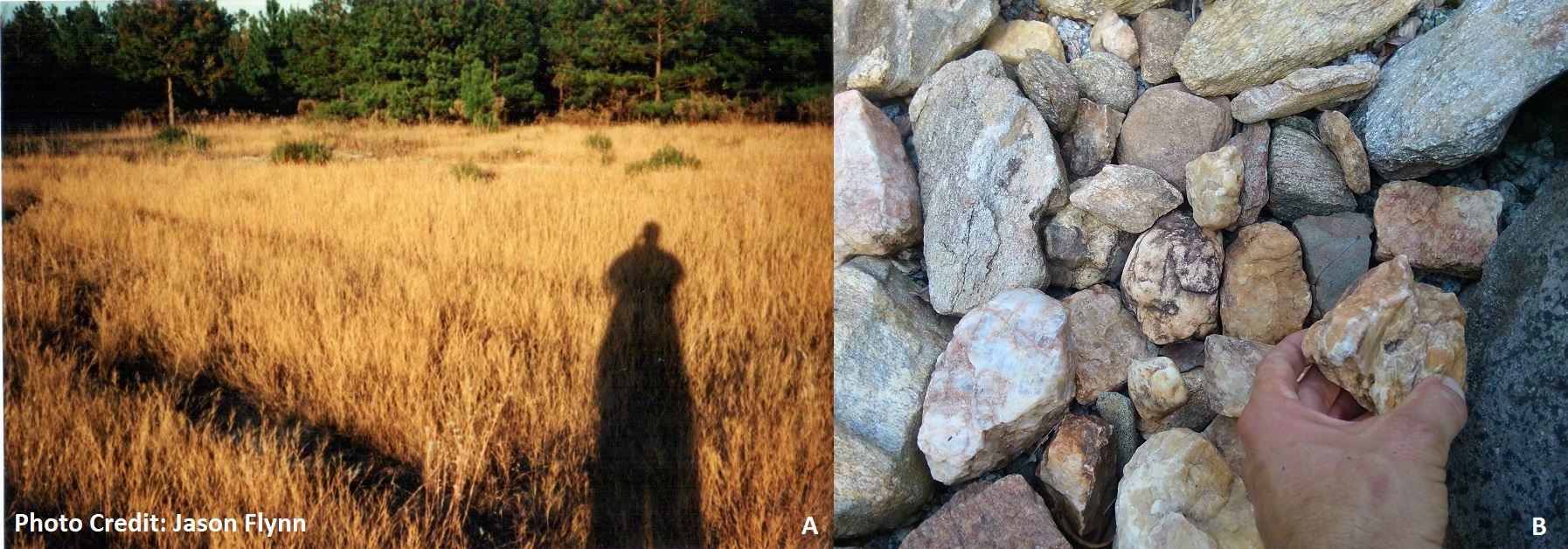
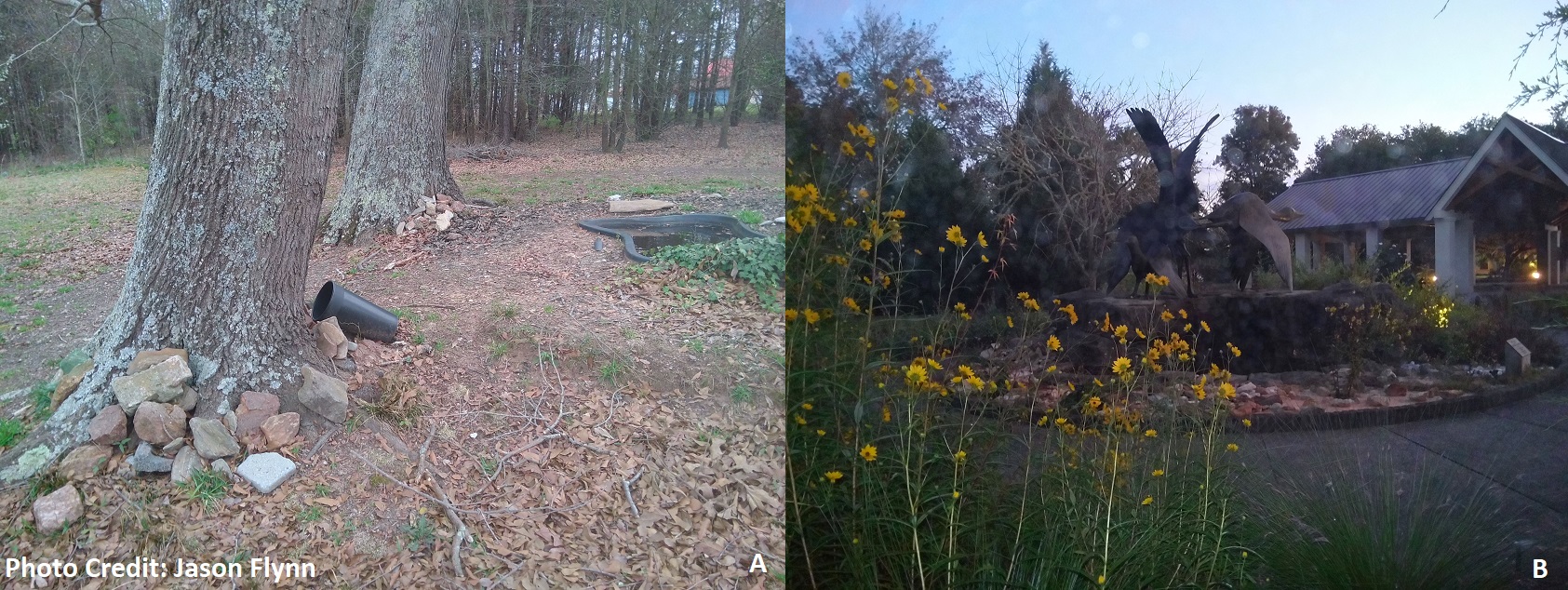
Before describing the exciting new addition of the South Carolina Geologic Garden, I would like to give you a little background on what piqued my interest in the fascinating world of geology. I lived in many of the geologic belts of South Carolina, which we will discuss later, and have explored all of them over the years. Exploring the layers of the geological and natural world felt like I was putting together a sort of jigsaw puzzle. I came to understand this "puzzle" was put together a very long time ago before even humans inhabited the Earth. The real question was not if the pieces fit together but rather how. As we dive deeper into the geology of South Carolina, I hope you will see, understand, and piece together the puzzle of our state's geology.
We can trace the aesthetic beauty, the functional elements found in the material world, the minerals and elements inside every living thing, back to a geological connection. This geological connection includes the plants in the wild and those in our botanical garden displays here at Brookgreen. The land we see and are a part of comes from geological processes set into motion at the formation of Earth. This garden captures a glimpse of the results of those processes at this moment in time. Understanding these aspects and natural world connections of the jigsaw puzzle can make for a humbling and awe-inspiring experience!
The South Carolina Geologic Garden at Heron, Grouse, and Loon displays geological samples of rocks, minerals, and subsoils naturally found across the state. I collected the elements for more than 25 years, with the help and support of family and friends. This display is a labor of love and heartfelt appreciation for the natural world that I am excited to share with our Brookgreen Gardens visitors!
The Heron, Grouse, and Loon garden space displays the true core of what makes the state of South Carolina and our local area in and around Brookgreen Gardens what it is today. In a condensed manner, this garden visually expresses how regions of the state that seem separate are all genuinely connected by local, interconnecting geological processes.
I designed this garden curving around the front part of the circle of the Heron, Grouse, and Loon sculpture to mirror the natural geological layout of the state. In nature progressing west-northwest to east-southeast, and in the garden bed, west to east. Geologists have divided South Carolina into geologically agreed upon "belts" because they mirror a belt stretching across the state from northeast to southwest. I arranged the geologic samples within the garden to fit together like a jigsaw puzzle reflecting the location of individual geologic formations within the geologic belts.
Let's take a look at the belts you can see in our display, as well as throughout the state!

The South Carolina geological belts from northwest to southeast are: the Blue Ridge, Brevard Fault Zone, Inner Piedmont, King's Mountain, Charlotte, Carolina Slate. These are all represented in our display, including the small exposure of the Kiokee and Belair belts separated by local saprolite subsoils in the Blue Ridge and Piedmont geographic areas.
The Fall Line cuts across the center of South Carolina from southwest to northeast and marks the abrupt changeover to the Coastal Plain geographic area. The display going east includes the Upper Coastal Plain (sometimes referred to as the Sandhills), Middle Coastal Plain, Lower Coastal Plain, and Coastal Zone. The Coastal Zone, the Lower Coastal Plain with an Atlantic Ocean influence in South Carolina, is the location of all Brookgreen Gardens' property.
We separated the Piedmont geologic belts within the garden by beds of South Carolina native plants, including purple coneflower (Echinacea purpurea) and obedient plant (Physostegia virginiana). To create an area that mimics the natural layout of the Blue Ridge geographic area, we did not include plantings where the samples from the Blue Ridge, Brevard Zone, and Inner Piedmont meet.
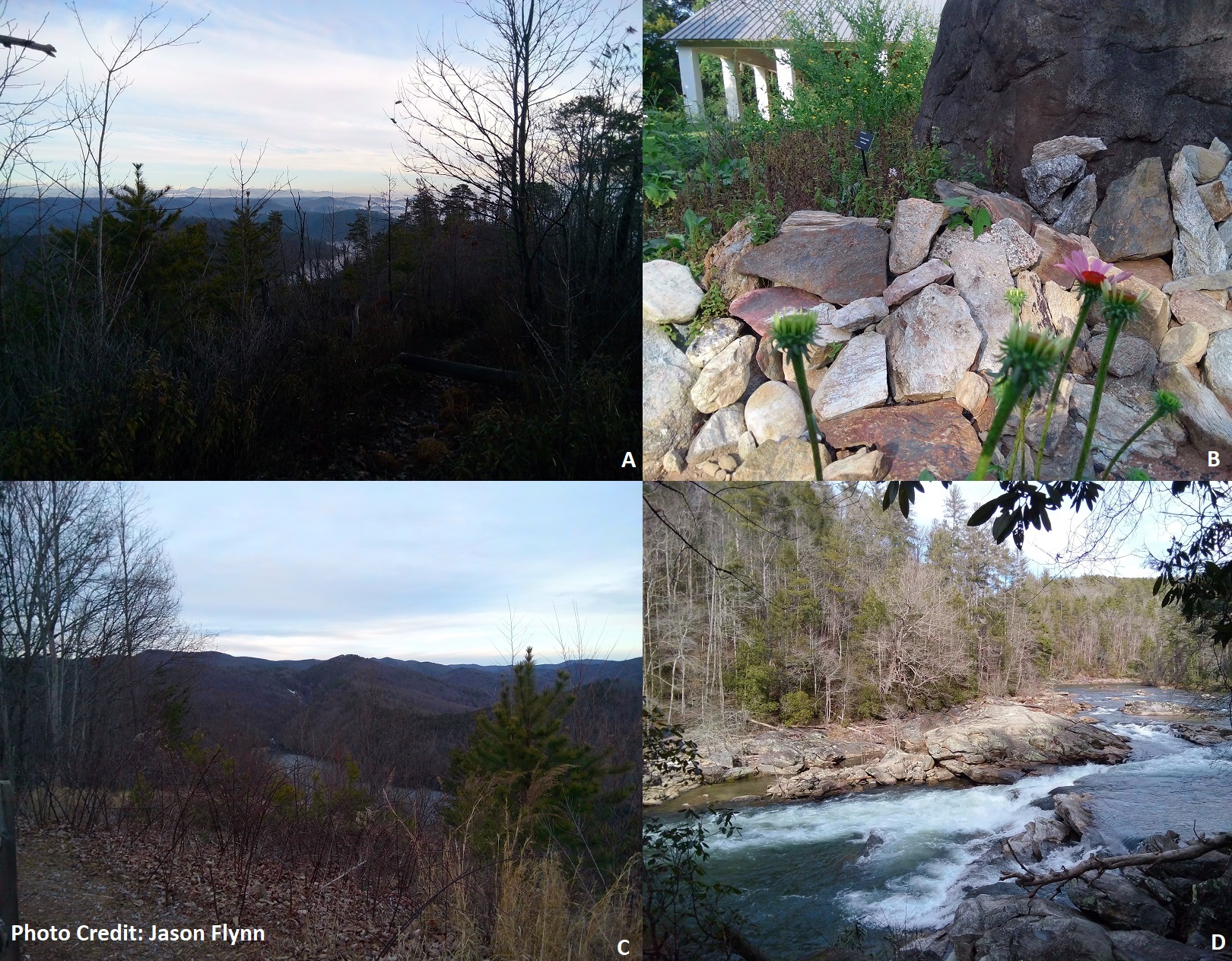
B) Meeting of Blue Ridge, Brevard Zone, Inner Piedmont rocks
C) Largest series of waterfalls east of the Mississippi River – the lower part is in South Carolina
D) Chattooga River in the Blue Ridge
Looking at the Piedmont belts in closer detail, you will notice many rocks and minerals. The Blue Ridge and Piedmont geographic areas are mostly metamorphic and igneous types of rock. They display different formation characteristics within each, such as grades of metamorphism, various igneous intrusions, and mineral content. Some sedimentary rocks exist in isolated places, such as seen with the fanglomerates pictured below, on display in the Carolina Slate Belt section of the garden.
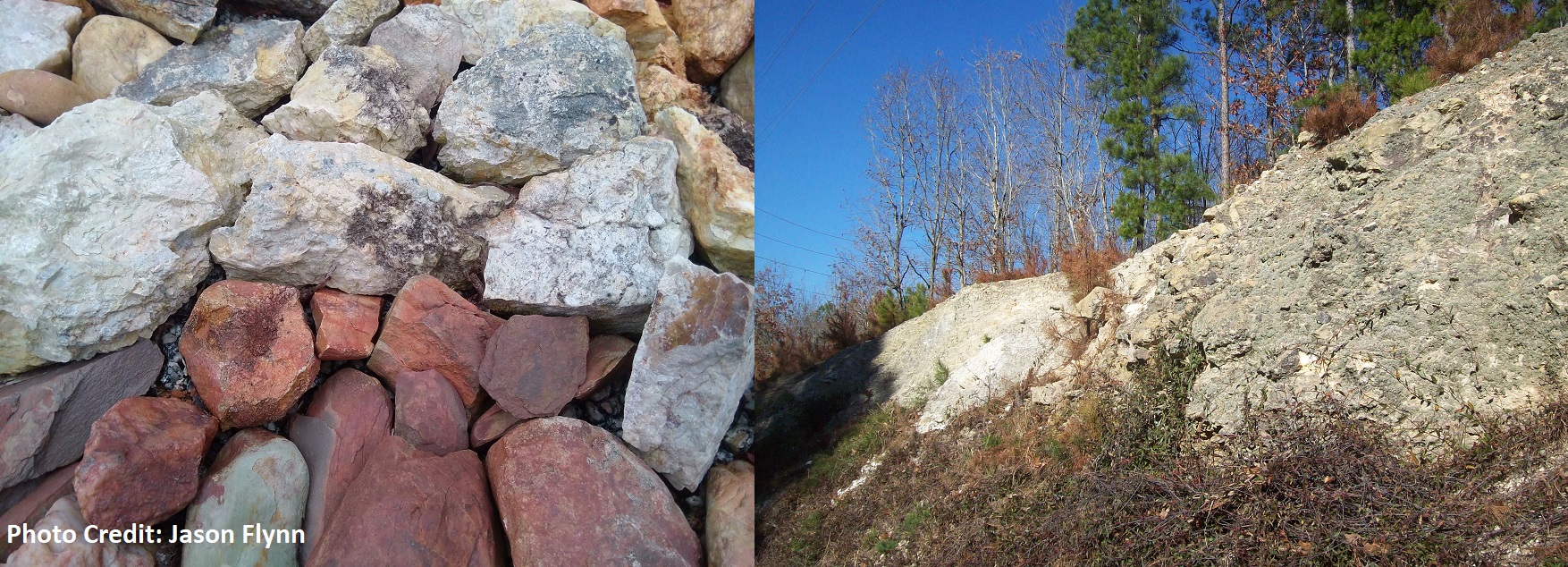
Some of the rocks and minerals displayed are unique to one particular belt because of an unusual formation, such as the South Carolina state rock: Winnsboro Blue Granite, pictured below. This rock is found in an igneous intrusion within the Carolina Slate Belt. It is on display in the South Carolina Geologic Garden.
You will also find other rock types: schists, phyllites, granites, gabbro, metavolcanics, metasediments, metasiltstone, metagraywacke, metabasalt amphibolite, slate, quartzite, porphyry, and marble, among others. Some minerals displayed include micas, different quartz varieties, and feldspars with distinct mineral characteristics.
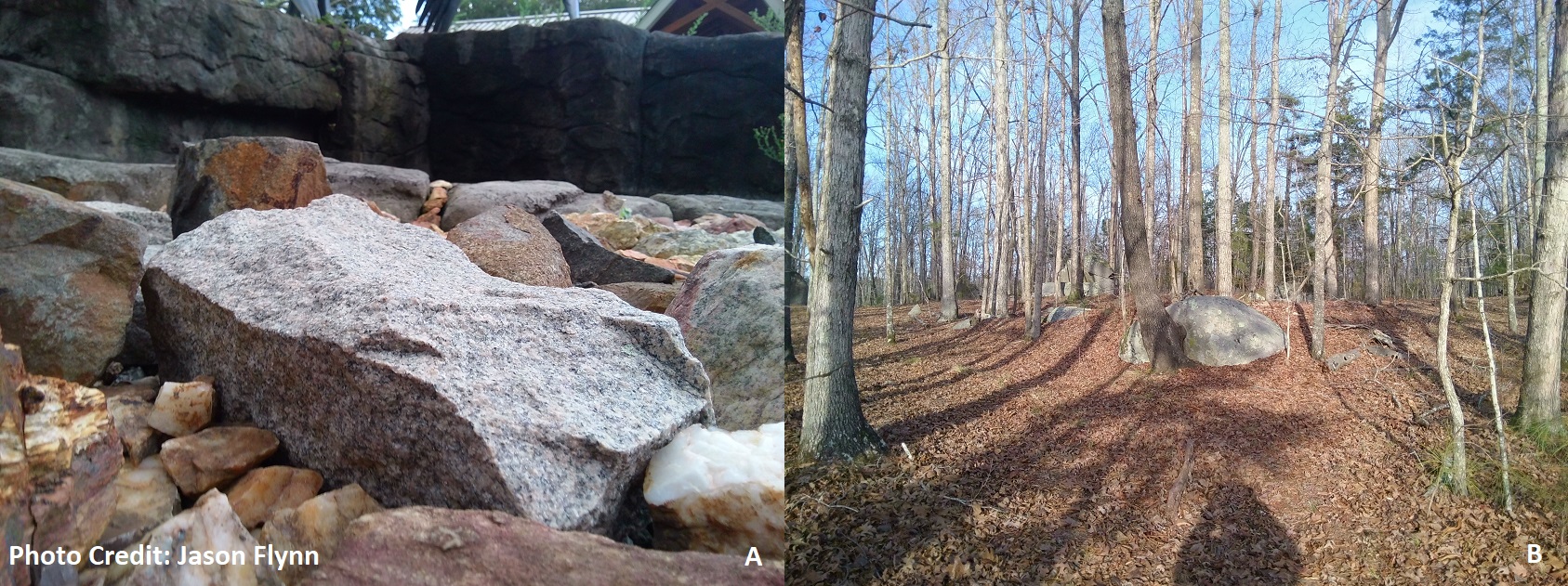
B) Winnsboro Blue Granite outcropping in nature
Some differences in the rocks within the Blue Ridge, each Piedmont belt, and Coastal Plain region are subtle, while perhaps others may not seem to be. This garden strives to display these differences in such a way that makes them more noticeable by comparison.
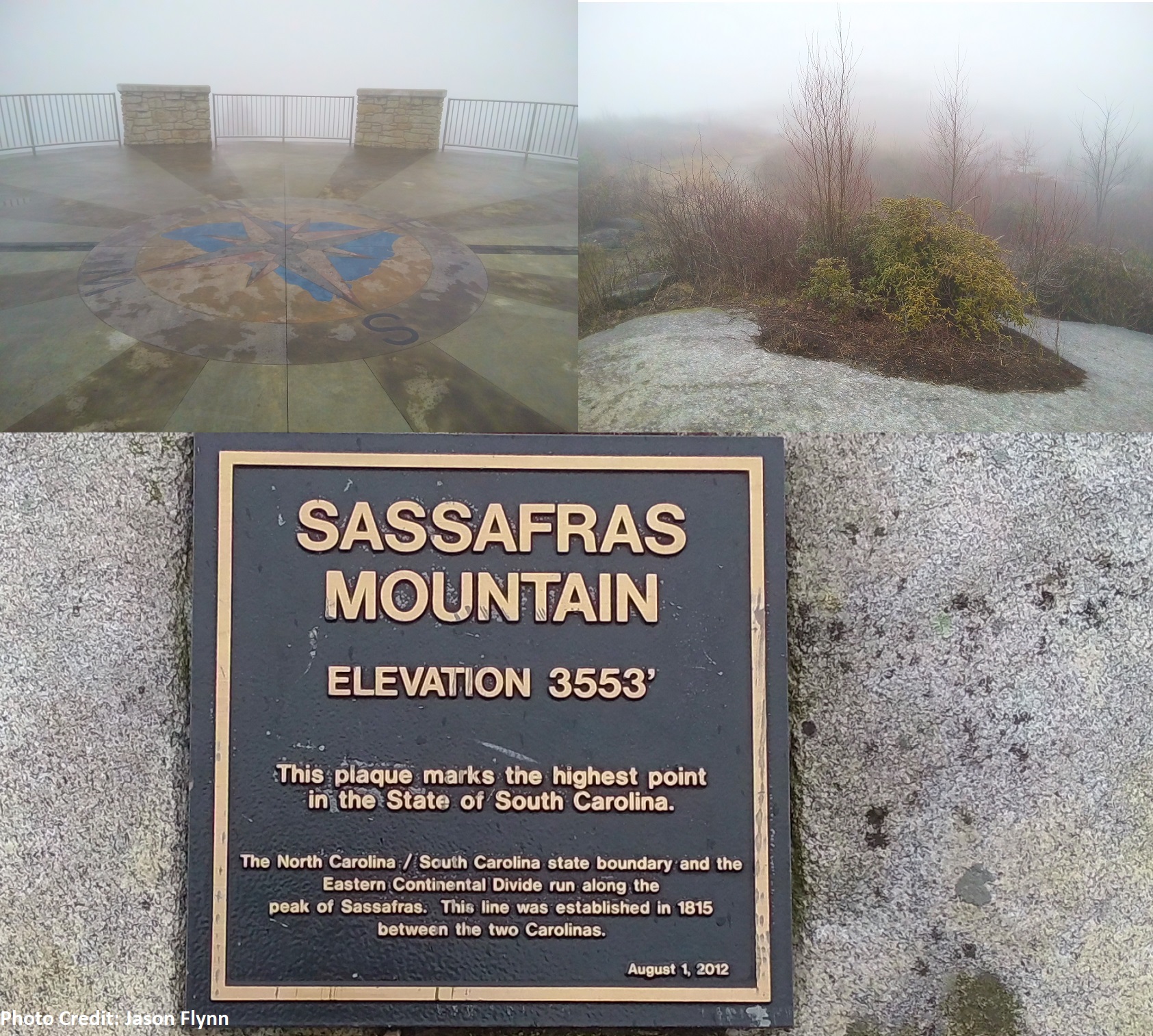
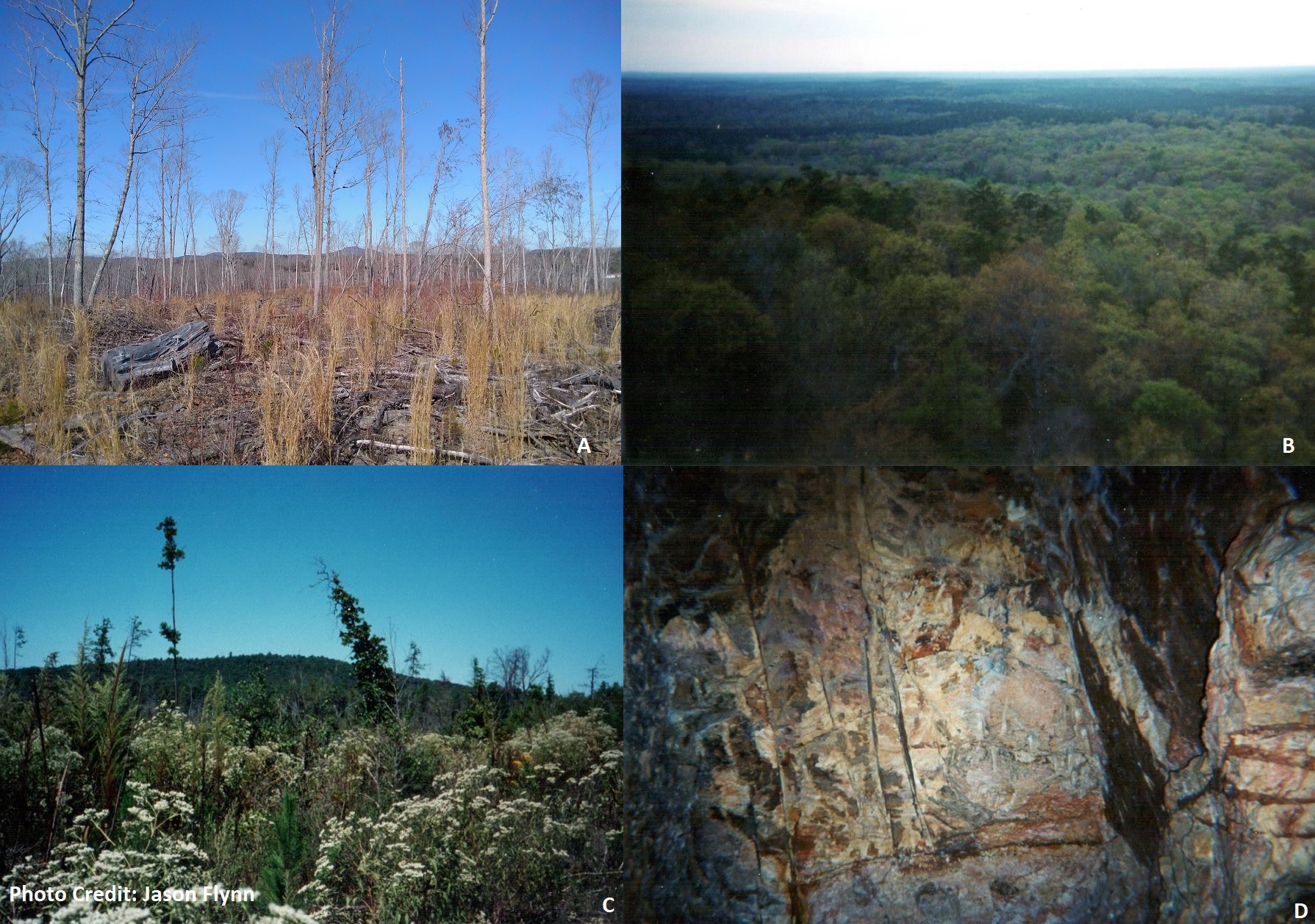
B) and C)The Charlotte Belt, with the King’s Mtn. Belt in the distance, atop a Charlotte Belt monadnock, or isolated mountain from the late 1990s.
D) Deep from within the Carolina Slate belt in the early 2000s.
The Fall Line area is noticeable in the garden as an abrupt change in the flow of the display from west to east and mirrors what we find in nature across the entire state. The Fall Line runs through cities such as the state capital of Columbia, beside the confluence of the Broad and Saluda rivers where they form the Congaree River, North Augusta in Aiken County straddling the Savannah River near the Georgia state line, and near the city of Cheraw beside the Pee Dee River in Chesterfield County. On significant rivers that flow from the Piedmont and Blue Ridge to the coastline, rocky rapids that indicate a change is occurring characterize the Fall Line.
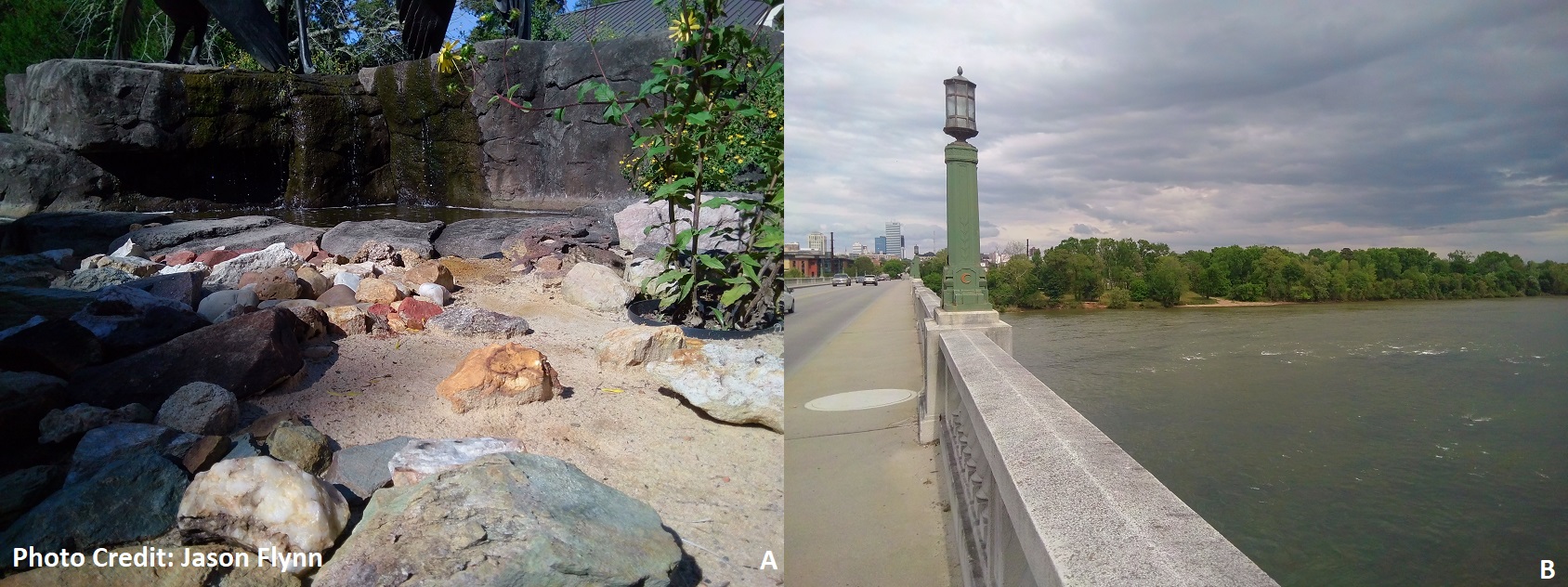
B) Fall line rapids of the Congaree River in downtown Columbia. The white caps at a high-water time cover the rocky bottom. Note the calmer water downriver easing into the flatter Coastal Plain
This change from the Piedmont to the Coastal Plain at the Fall Line is visually abrupt at the surface in nature and the garden. The Piedmont region geology dips at the Fall Line. It continues under the Coastal Plain accumulated sediments, well beyond the current South Carolina beach line, under Atlantic Ocean waters to the continental shelf many miles offshore.
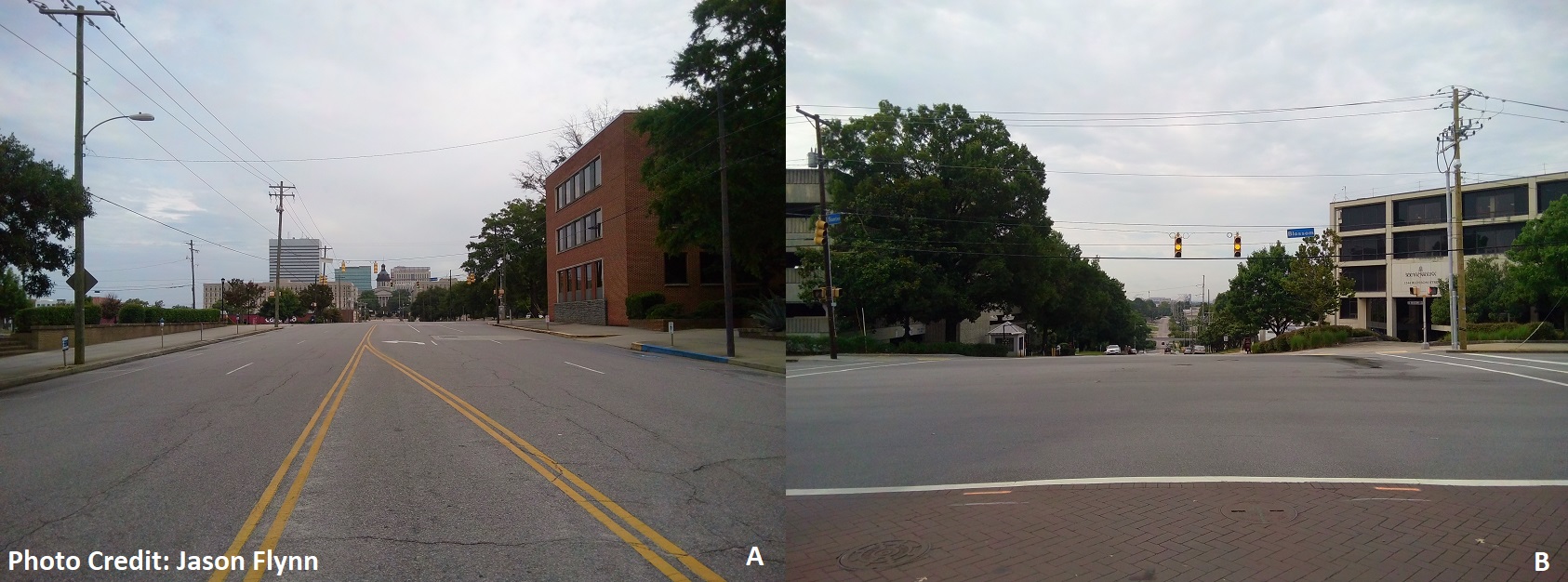
B) The opposite direction on Main St. UofSC in the distance sits on the Coastal Plain, land that was in, or near, what was once the edge of the ocean.
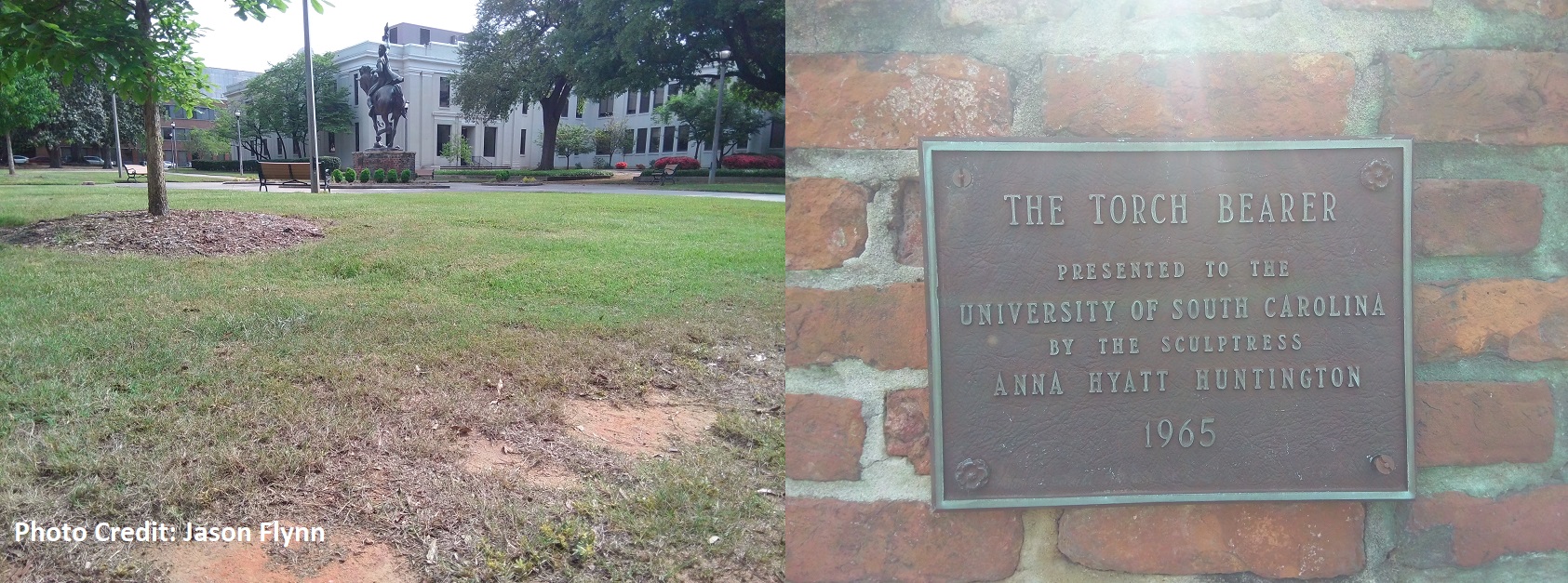
The Upper, Middle, and Lower Coastal Plains are markers of the Atlantic Ocean's dynamics in recent geologic history. The Atlantic has encroached and receded multiple times to different locations, including being further out from our current shoreline in the recent geologic past. The action of the ocean has made the more distant past and some aspects of the Coastal Plain more of a mystery because of the shifting and sorting of sediments from time, wind, river, and oceanic action impacts.
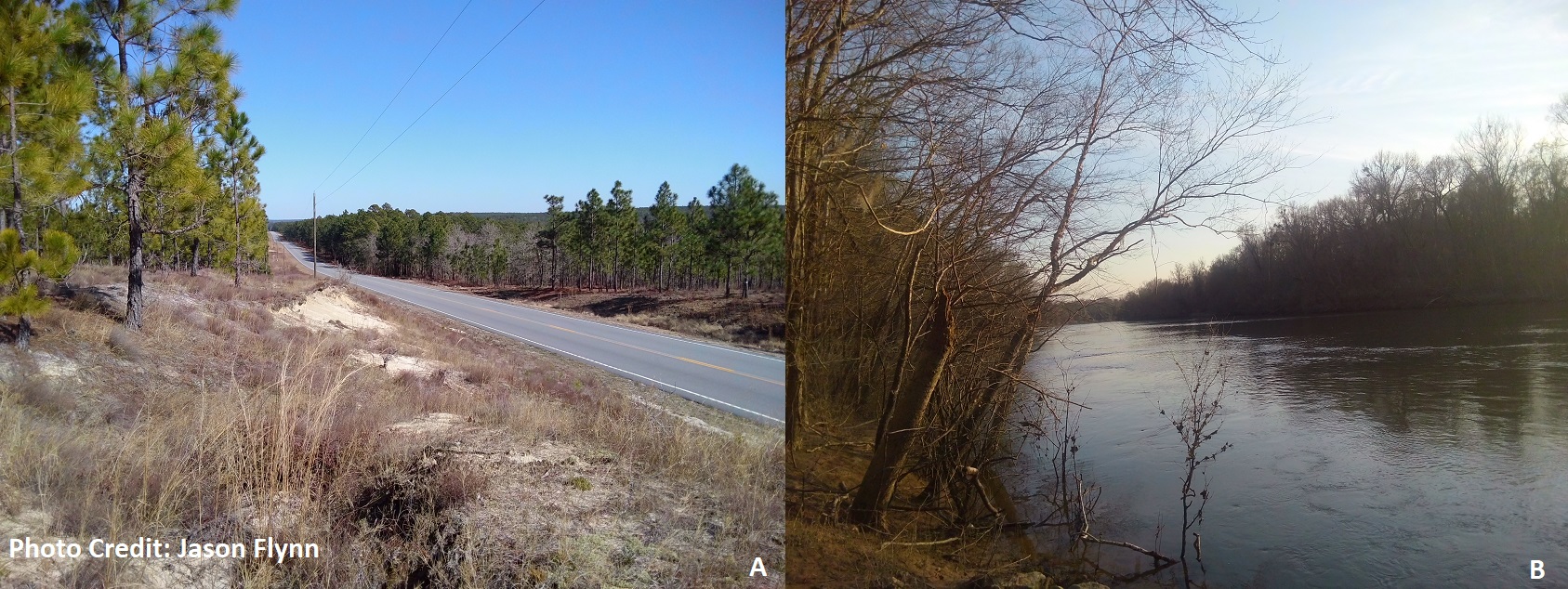
B) Sunset at the Savannah River in rural Allendale county. Sands that sit atop layers of oceanic sediments from different geologic time scales; nearby rivers sit in the Lower and Middle Coastal Plain
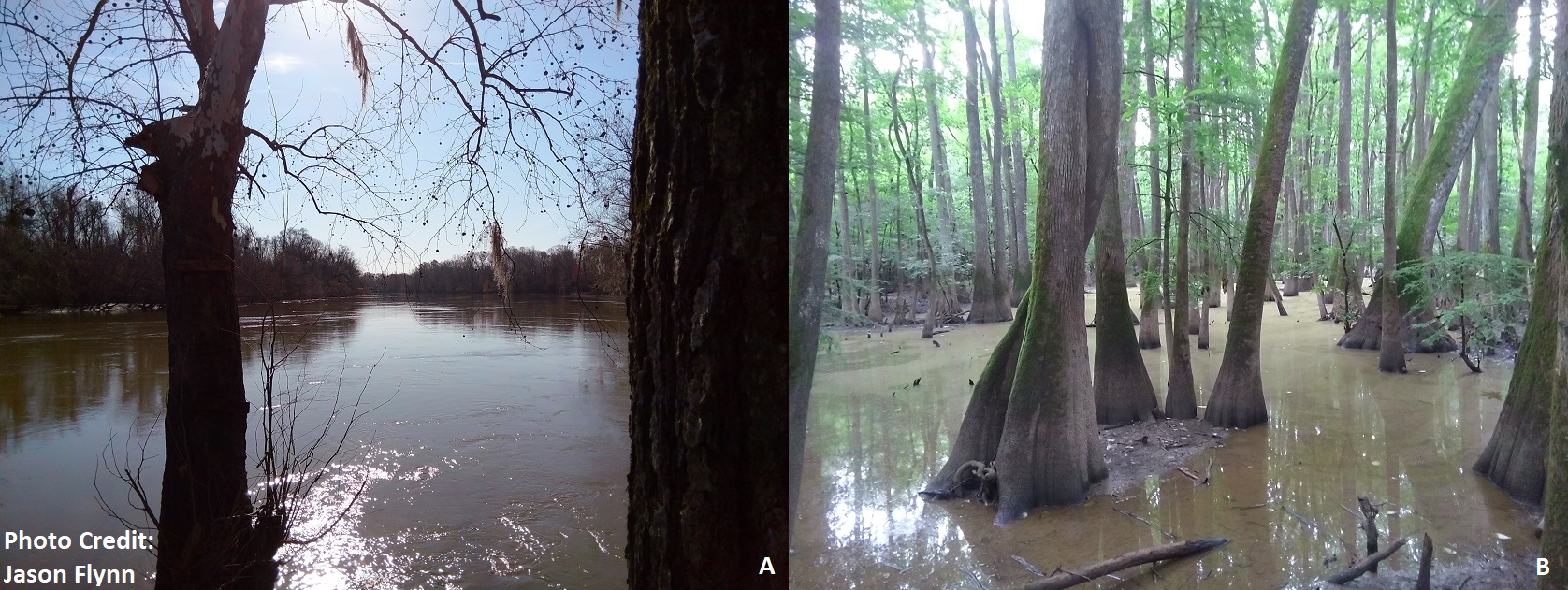
B) Part of the Middle and Lower Coastal Plains and an ecological treasure of SC and for planet Earth – Congaree National Park. Roughly 10-15 miles from downtown Columbia.
Displayed in the Coastal Plain section of the garden are much younger sedimentary rocks, sometimes seen at the surface in nature, between large expanses of coastal plain sediment. The sand and sediment of the Coastal Plain have mixed with the encroaching and receding Atlantic Ocean sediments and water many times. This mixing of land and water created the sporadic and younger sedimentary rock layers mixed in Coastal Plain sediments.
The Coastal Plain section of the garden includes displays of coquina (various forms of limestones), chert, solidified marls, shale, sandstone, phosphorous rock (phosphorite), citronelle rocks, and kaolinite. Kaolinite is solidified kaolin clays with a slight pink hue in this garden due to natural iron oxides. A unique feature of these rocks even is they may be intermixed with signs of marine life and can be found over 100 miles inland from today's beach line escarpment up to near the Fall Line! While it may be hard to believe, this is visual evidence of the extreme fluctuation of ocean levels in history and the impact on the Coastal Plain lands, the state, and the entire planet!
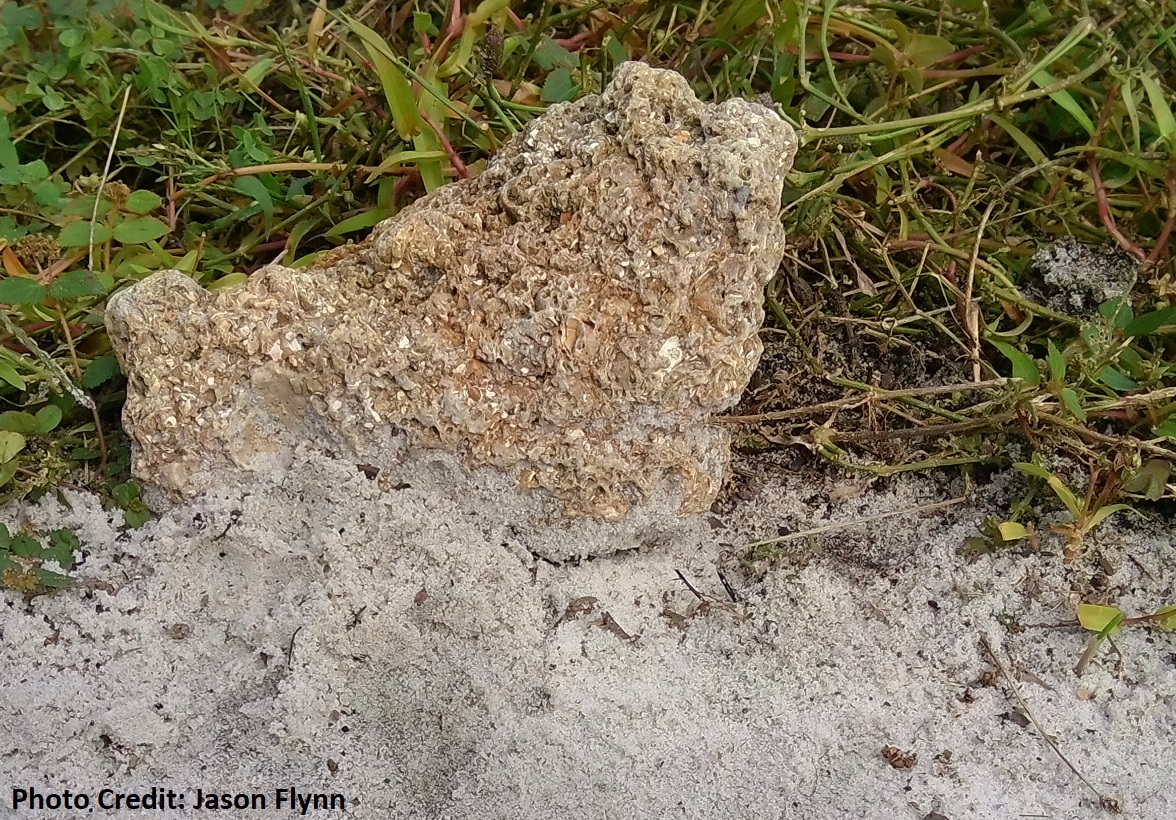
The geology of the Coastal Zone is one of the relatively recent shifts and changes to the land and continuing influence from the Atlantic Ocean on the Lower Coastal Plain. In the garden, the area displayed contains beach sand partially composed of large amounts of fine quartz. The quartz came down rivers flowing from the Piedmont and Blue Ridge. There is also a display of native seashells. In nature, this zone goes inland roughly 10 miles. The ever-admired and iconic live oak (Quercus virginiana) is found almost exclusively in the Coastal Zone.
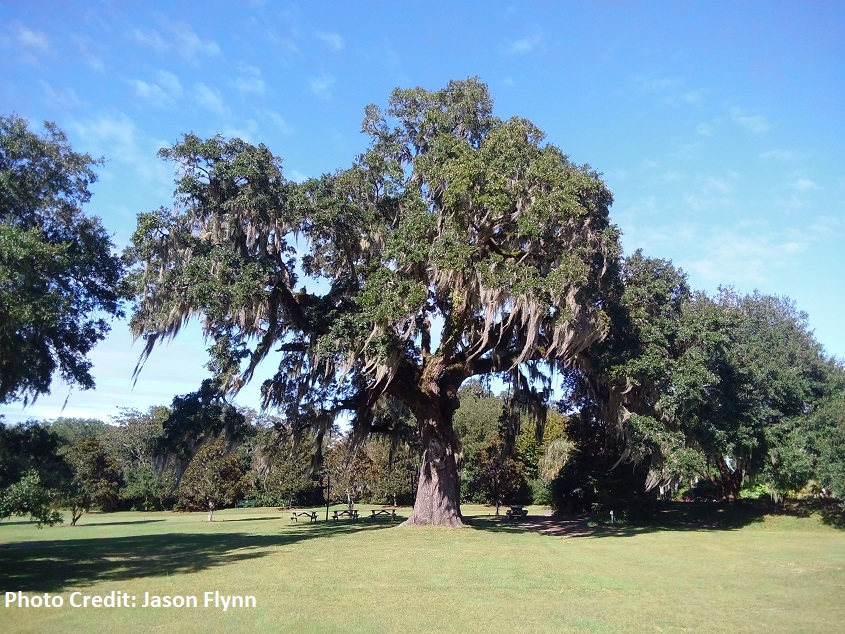
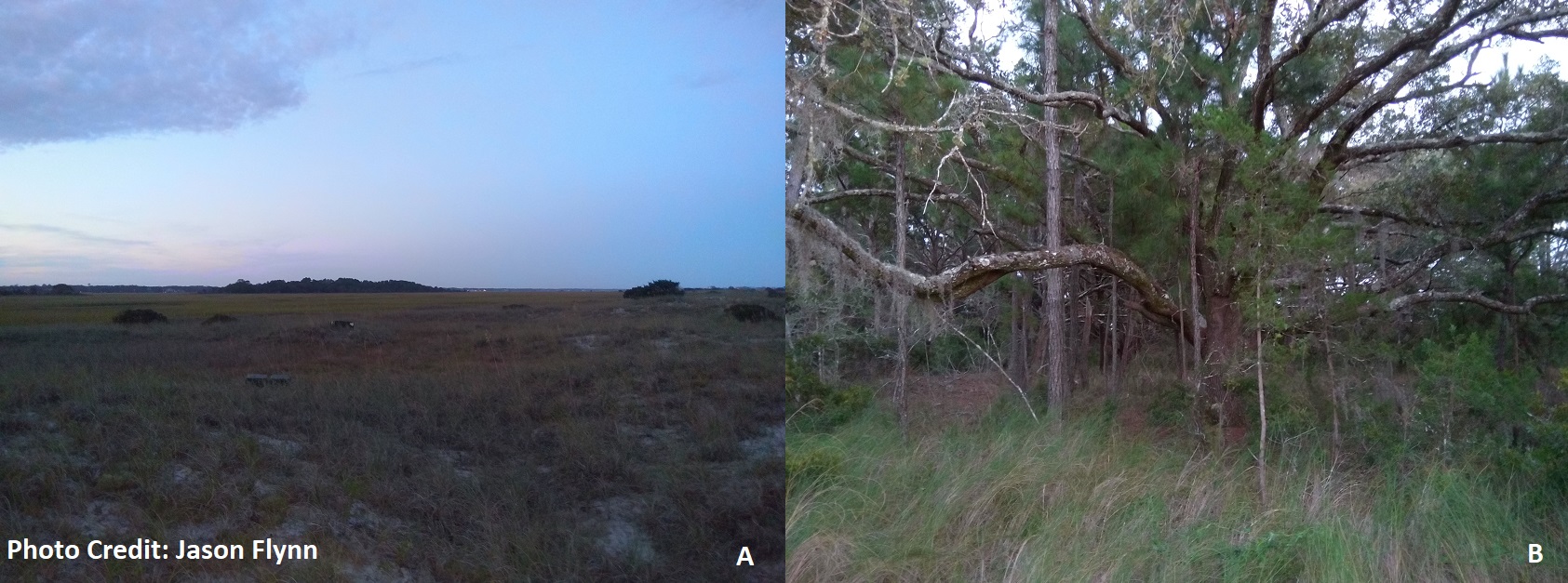
A) Drunken Jack Island at Huntington Beach State Park is a rare example of an island, a geologic feature seen commonly in the Coastal Zone area south of the Grand Strand region in SC.
B) A wild live oak at Huntington Beach State Park, in the Coastal Zone.
Taking an even more detailed look at the belts, you will notice different subsoil types that you can find within the display. The Blue Ridge and Piedmont regions show common saprolite type subsoils, or "rotten rock." Saprolite is decomposed rock still within its original location in nature. The change in the composition and appearance of saprolite subsoils occurs based on the parent rock before decomposition, mineral content, iron content, historic atmospheric and groundwater moisture, atmospheric humidity levels, and erosion rates over long periods.
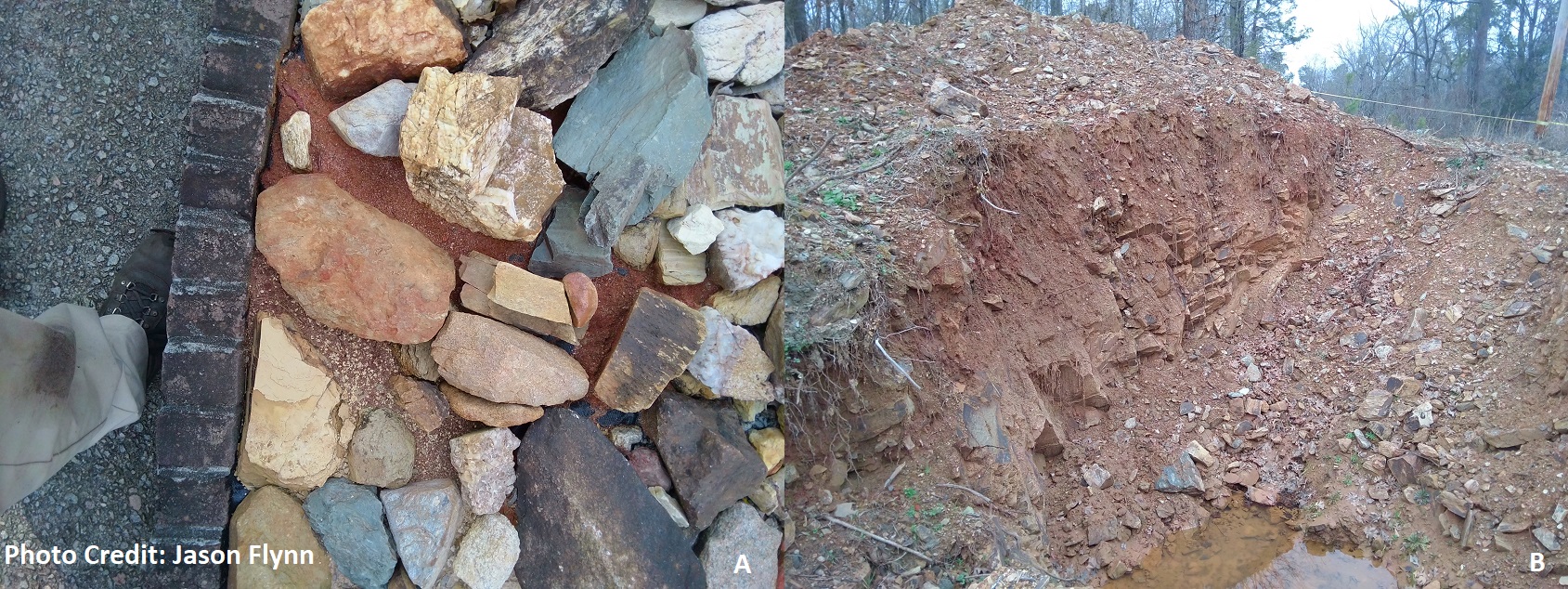
B) A fleeting glimpse of Belair belt subsoil and bedrock during past utility work.
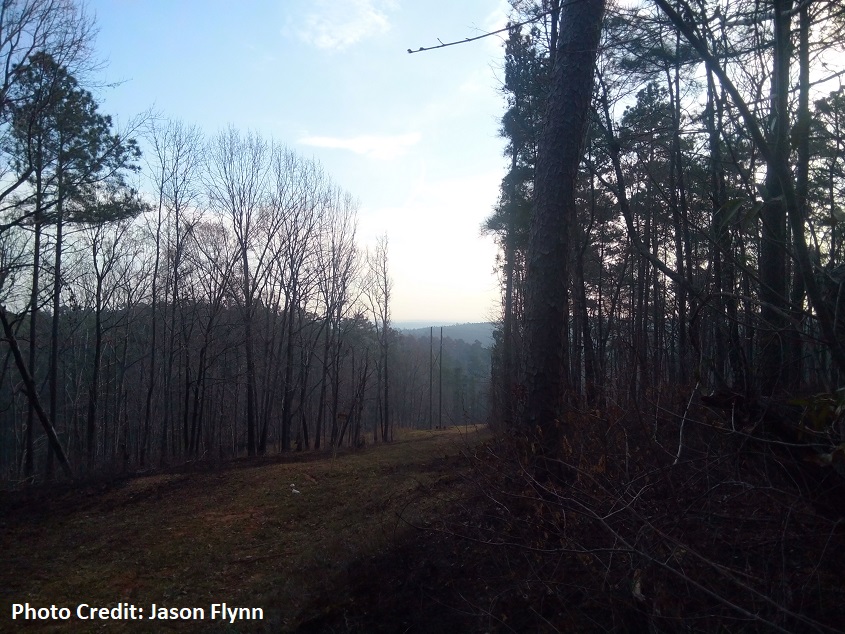
The Coastal Plain consists of various sand deposits and subsoil types that originally eroded from the rocks of the ancient and once giant Blue Ridge and Piedmont mountains long ago. These deposits geologically tie the Coastal Plain of South Carolina into the southern crystalline Appalachian region, including the Blue Ridge and the distinct Piedmont belts of South Carolina. Many deduce these Blue Ridge and Piedmont geologic belts could have been as high in elevation as the Himalayas are today – that's an elevation of as high as 29,000 feet!
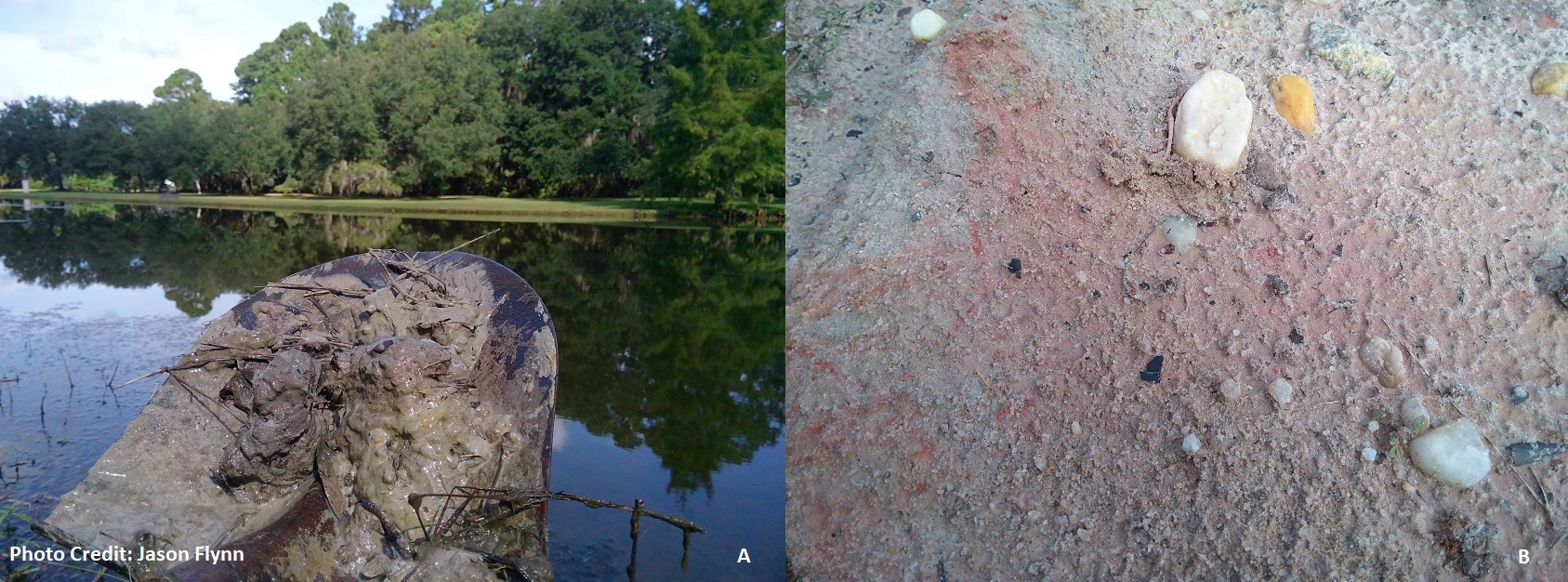
B) Middle Coastal Plain subsoil with citronelle gravels intermixed
The various subsoils on display at the South Carolina Geologic Garden from the Coastal Plain region of South Carolina, are specifically from the Barnwell Sand formation, PeeDee formation, Tuscaloosa formation, Santee limestone, and recent Pleistocene and Holocene timeframe encroachment subsoils from the Coastal Zone, including from right here at Brookgreen Gardens. Even a sample of sand from the rim of a fascinating geologic feature found in great numbers across the entire Coastal Plain east of the Fall Line: the Carolina Bays.
The samples contained within the South Carolina Geologic Garden originated from 31 of South Carolina's 46 counties. These counties include Abbeville, Aiken, Allendale, Anderson, Barnwell, Charleston, Cherokee, Chesterfield, Edgefield, Fairfield, Florence, Georgetown, Greenville, Greenwood, Horry, Jasper, Kershaw, Lancaster, Laurens, Lexington, Marion, McCormick, Newberry, Oconee, Orangeburg, Pickens, Richland, Spartanburg, Sumter, Union, and York.
While the garden is undoubtedly full of rocks, it also includes plants! Intermixed are a selection of plants native to South Carolina. We carefully selected and placed the plants to represent what you would see within the state's different regions. Geology and nature are interconnected, and their union is an essential aspect of this garden. Gardens and the soil we encounter every day could not, and would not, exist without geological processes and their ongoing role.
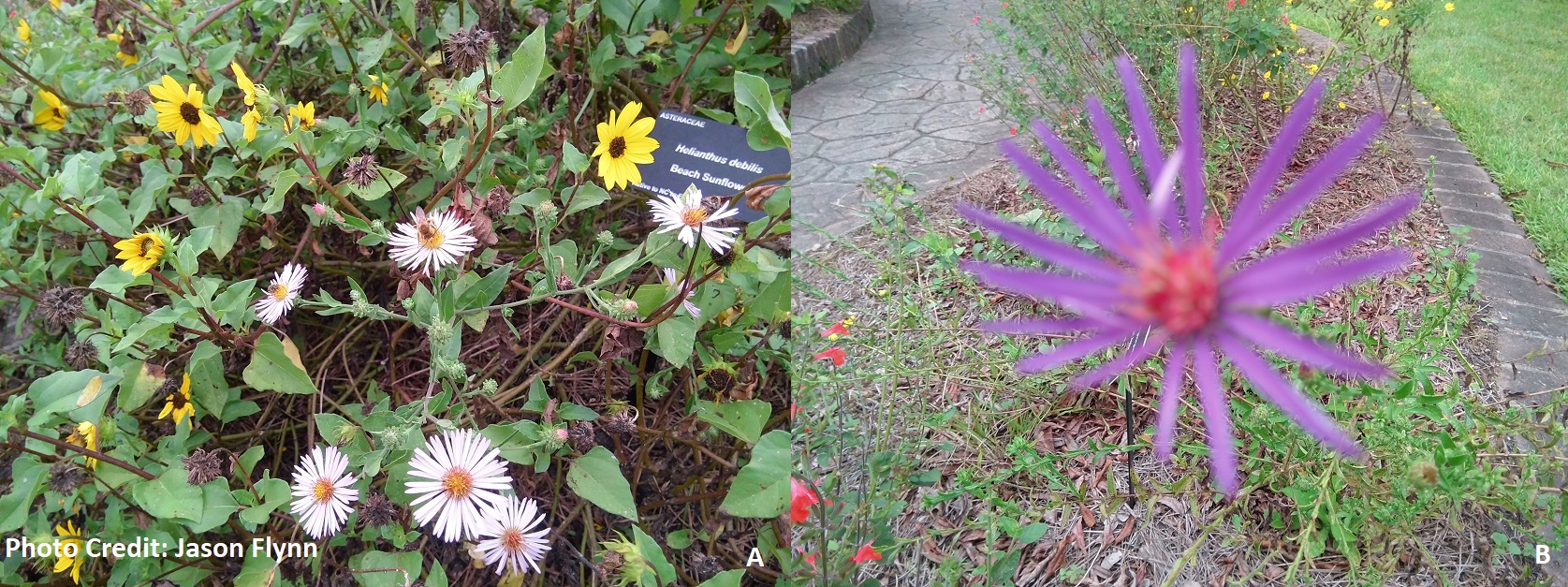
B) SC native Georgia aster found primarily in the Piedmont. A treat to see this rare, at-risk plant in its first bloom!
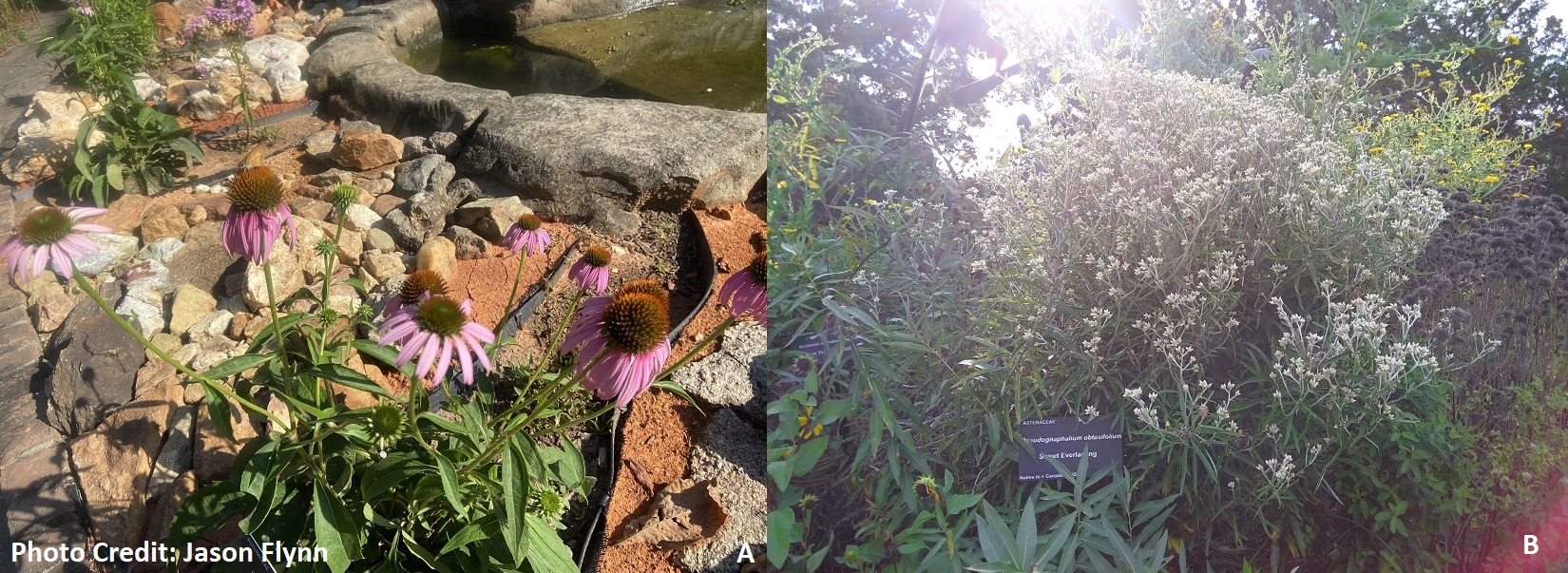
B) A plethora of native plants found in SC, clockwise: camphorweed, Appalachian mountain mint, eastern blue star, beach sunflower, and New York ironweed, all surrounding sweet everlasting plant (rabbit tobacco).
Geology and the interconnections found in nature are vast and far-reaching! For more information on South Carolina geology and the interconnections in nature, I recommend reading Carolina Rocks! The Geology of South Carolina by Carolyn Hanna Murphy and the historically and critically accepted landmark book on the subject from the late, legendary Aldo Leopold, entitled A Sand County Almanac: And Sketches Here and There.
Additionally, be sure to watch our YouTube video below where I describe the South Carolina Geologic Garden in a quick walkthrough.

B) Sunset on the Coastal Zone beach line at Huntington Beach State Park. The natural connections and cycles continue…
The journey continues!
See you in the Gardens!
Hours
Hours:
Daily | 9:30 AM - 5:00 PM
For daytime admission, gates close at 4:30 PM. For their safety and the safety of our animal collection, pets are not allowed, nor can they be left in vehicles inside Brookgreen. Service animals that have received special training to assist disabled persons are welcome.
Tickets
Daily General Admission Tickets for 7 consecutive days
Children 3 and under: Free
Children 4-12: $14
Adults 13-64: $25
Seniors 65 & Over: $23
Location
1931 Brookgreen Drive
Murrells Inlet, SC 29576
Off US Highway 17 Bypass, between Murrells Inlet and Pawleys Island on South Carolina's Hammock Coast
843-235-6000
GOOGLE DIRECTIONS